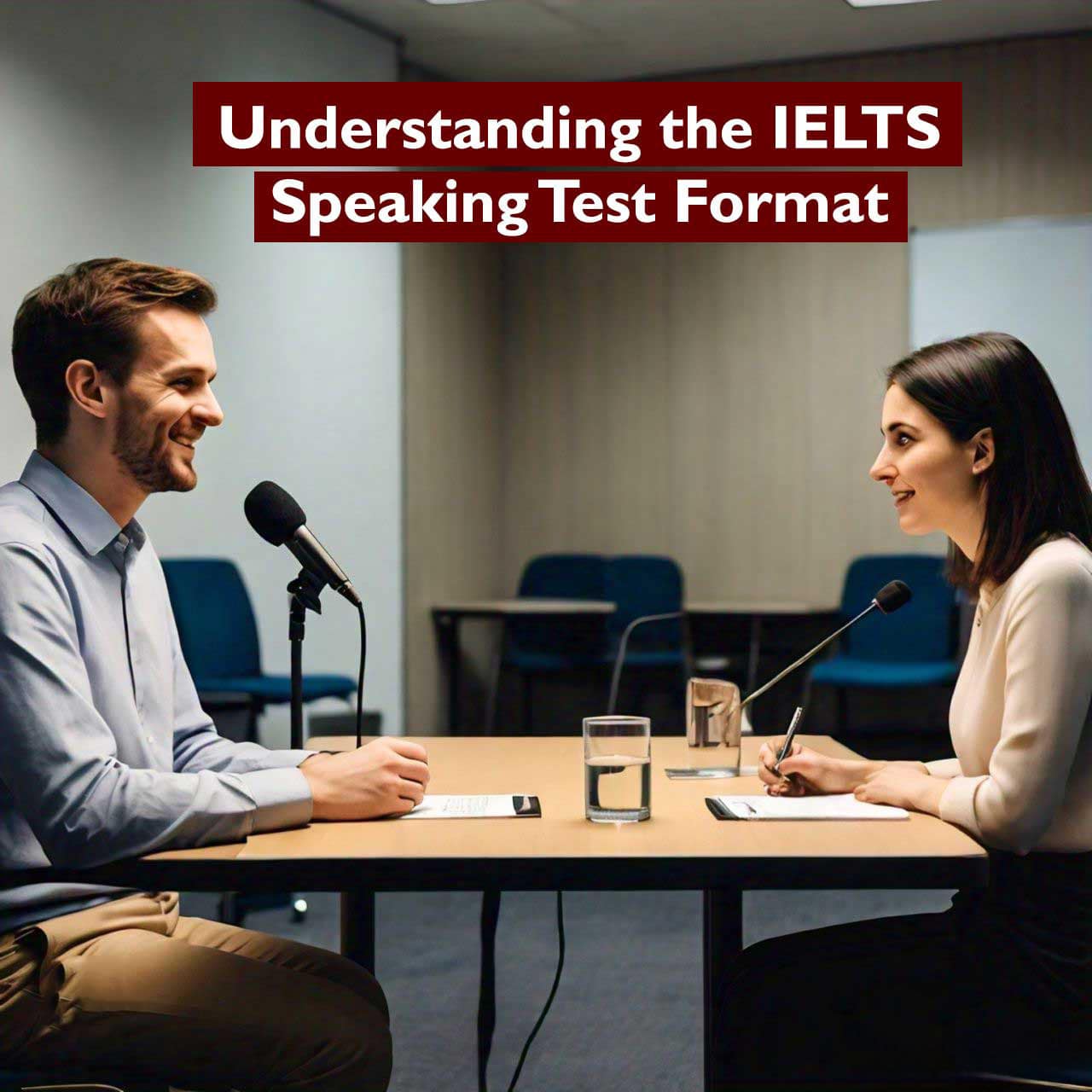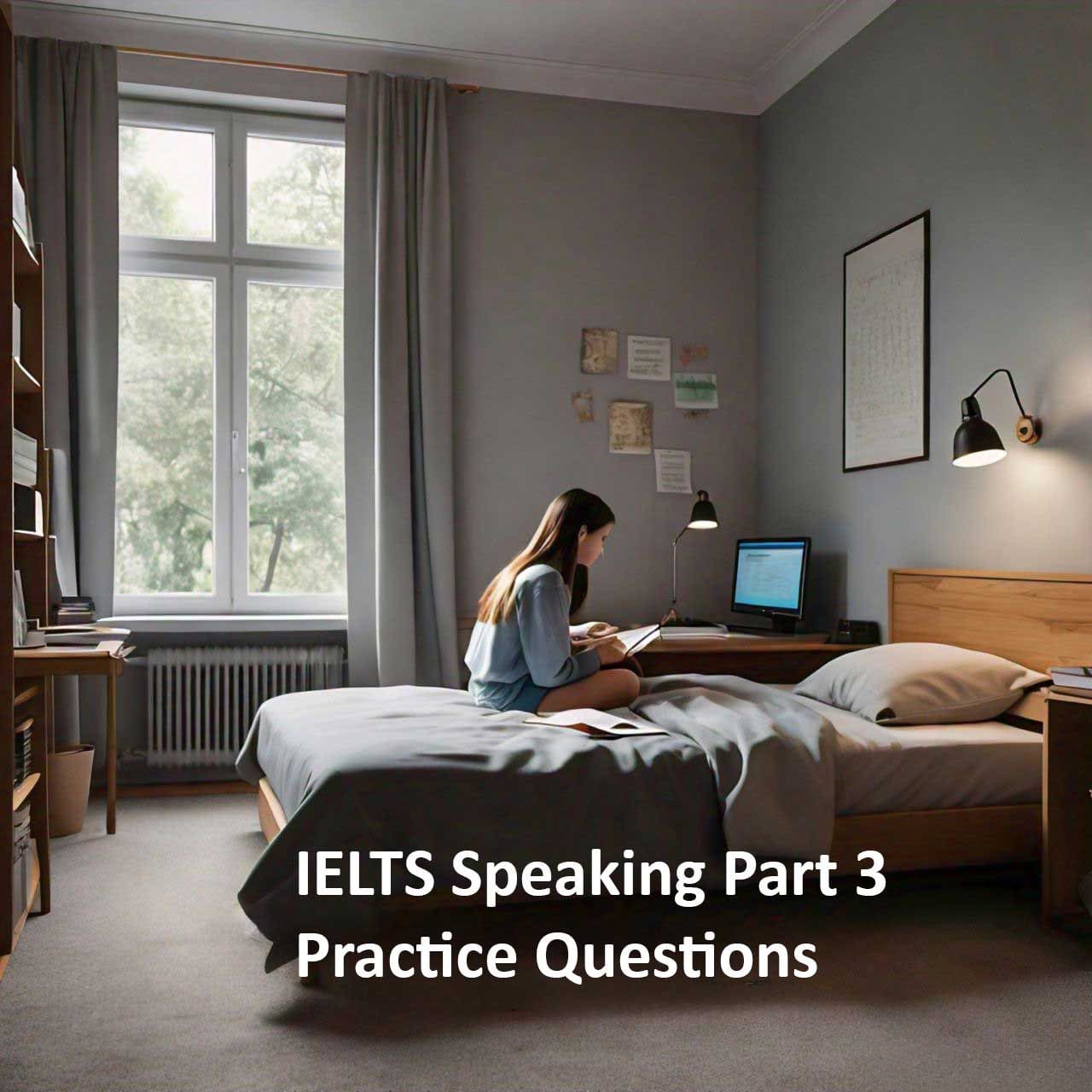The IELTS Speaking Test is a vital part of the IELTS examination, designed to assess a candidate’s spoken English skills. This section evaluates your ability to communicate effectively in English through various tasks that reflect real-life situations. Whether you are taking the Academic or General Training version of the IELTS, the Speaking Test format remains the same. This blog post will provide an in-depth look at the IELTS Speaking Test format, breaking down each part, and offering tips to help you prepare and perform confidently.
Table of Contents
Overview of the IELTS Speaking Test
The IELTS Speaking Test is conducted face-to-face with a certified examiner and lasts between 11 and 14 minutes. It is divided into three parts, each designed to test different aspects of speaking ability, including fluency, coherence, pronunciation, lexical resource, and grammatical range and accuracy.
Section Breakdown
1. Part 1: Introduction and Interview (4-5 minutes)
In the first part, the examiner will introduce themselves and ask you to do the same. This section involves answering general questions about yourself, your home, family, work, studies, and interests. The purpose is to make you feel comfortable and to assess your ability to speak about familiar topics.
Example Questions:
– Can you tell me about your hometown?
– What do you enjoy doing in your free time?
– Do you work or study?
2. Part 2: Long Turn (3-4 minutes)
In this part, you will be given a task card with a topic and some bullet points to cover. You will have one minute to prepare your response and can make notes if you wish. After the preparation time, you will need to speak on the topic for 1-2 minutes without interruption. The examiner may ask one or two follow-up questions after you finish.
Example Task:
Describe a memorable journey you have been on. You should say:
– Where you went
– How you traveled
– What you did during the journey
– And explain why it was memorable.
3. Part 3: Discussion (4-5 minutes)
The final part involves a two-way discussion with the examiner on more abstract topics related to the theme of Part 2. This section assesses your ability to express and justify opinions, analyze issues, and discuss hypothetical situations.
Example Questions:
– Why do people enjoy traveling to different places?
– How has travel changed compared to the past?
– What impact does tourism have on local cultures?
Assessment Criteria
Your performance in the IELTS Speaking Test is evaluated based on four criteria:
1. Fluency and Coherence: This refers to your ability to speak smoothly, logically, and coherently. Avoiding long pauses and speaking at a natural pace is crucial.
2. Lexical Resource: This assesses the range and accuracy of your vocabulary. Using a variety of words and expressions and demonstrating the ability to paraphrase are important.
3. Grammatical Range and Accuracy: This evaluates your use of grammar, including sentence structure and complexity, as well as the accuracy of your grammatical usage.
4. Pronunciation: This involves the clarity and comprehensibility of your speech. Proper pronunciation, intonation, and stress patterns are essential.
Preparation Tips
1. Practice Regularly: Regular speaking practice is key. Engage in conversations with friends, family, or language partners. Use English in your daily life to build confidence and fluency.
2. Record Yourself: Recording yourself while speaking on various topics can help you identify areas for improvement. Listen to your recordings and work on any weaknesses you notice.
3. Expand Your Vocabulary: Learn new words and phrases and practice using them in context. A rich vocabulary will help you express yourself more clearly and accurately.
4. Use a Variety of Grammar: Practice using different grammatical structures, including complex sentences, conditionals, and various tenses. This will demonstrate your grammatical range to the examiner.
5. Improve Pronunciation: Work on your pronunciation by listening to native speakers, repeating after them, and practicing with pronunciation guides or apps. Focus on clarity and natural intonation.
6. Simulate the Test Environment: Practice speaking under timed conditions to get used to the format and pressure of the test. This will help you manage your time effectively during the actual exam.
7. Stay Calm and Focused: During the test, stay calm and listen carefully to the examiner’s questions. Take a moment to think before you respond, and don’t rush your answers.
Conclusion
The IELTS Speaking Test is a comprehensive assessment of your spoken English abilities, designed to reflect real-life communication skills. By understanding the test format and practicing regularly, you can enhance your speaking skills and increase your chances of achieving a high score. Remember, preparation, practice, and confidence are the keys to success in the IELTS Speaking Test.



